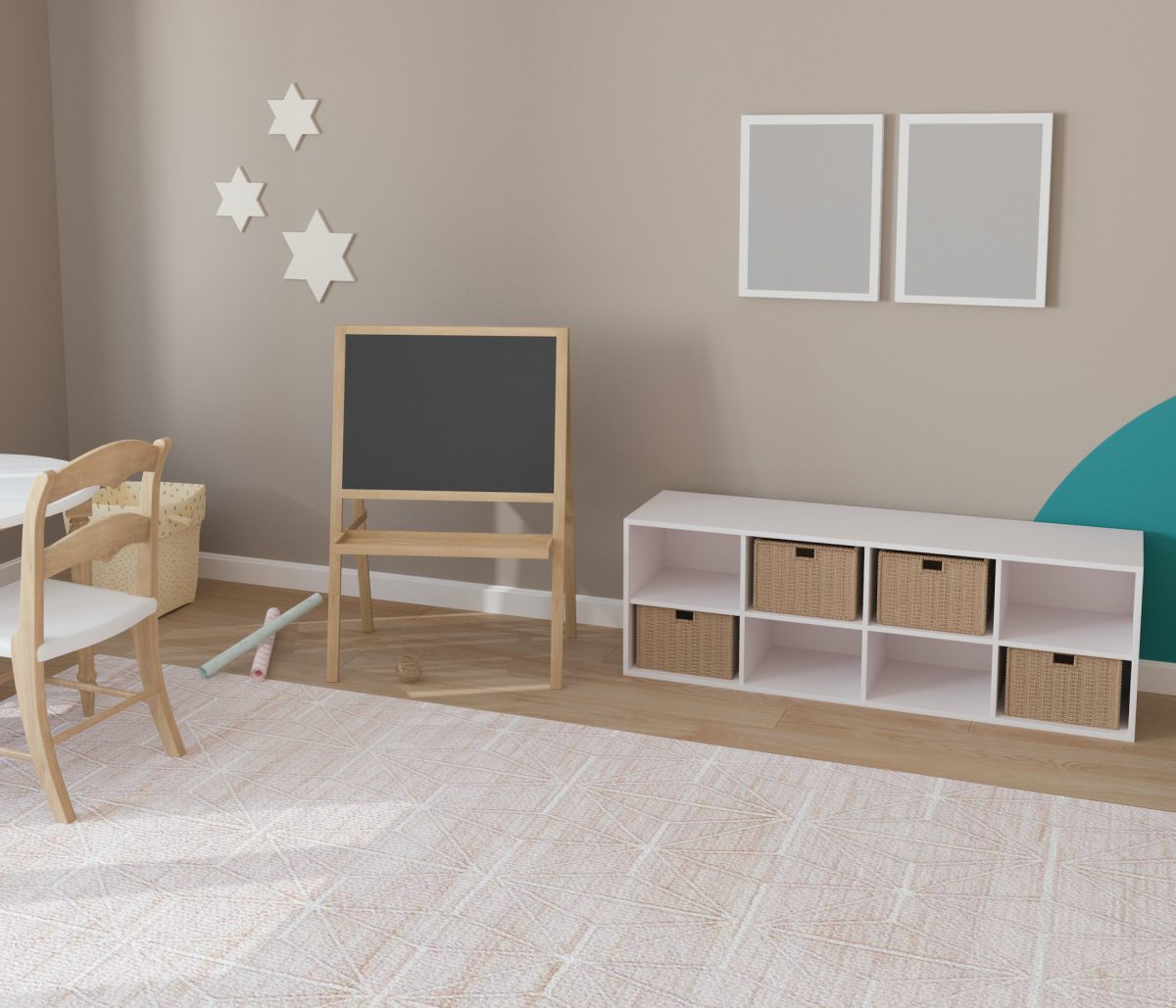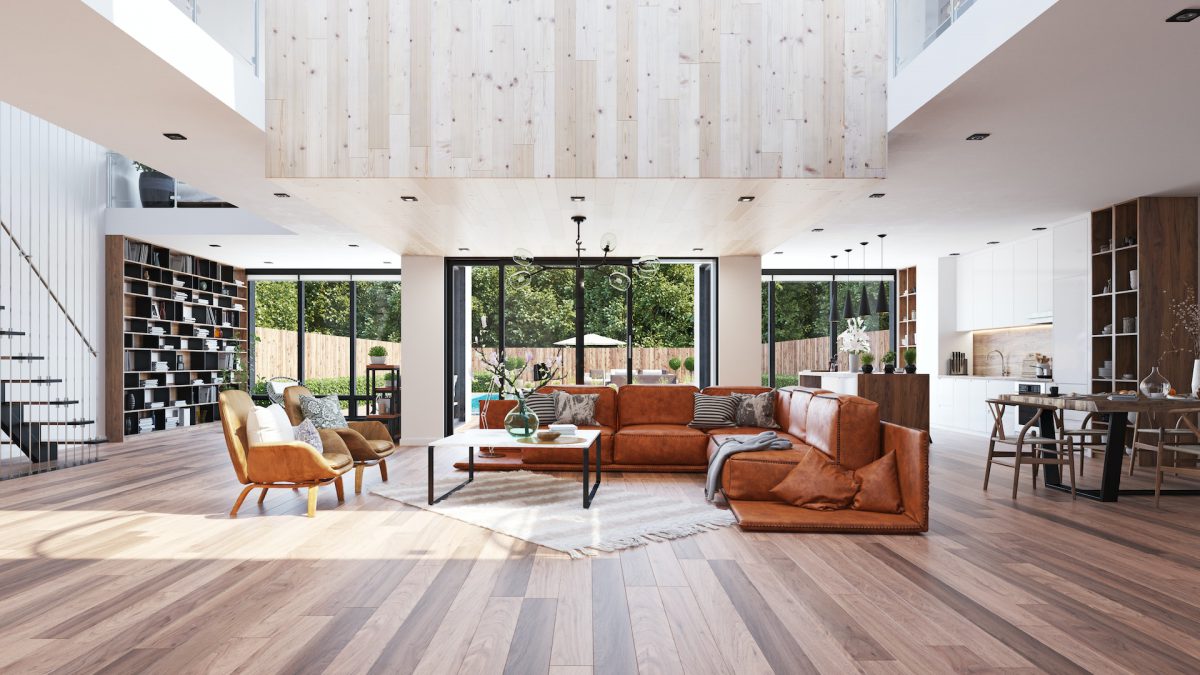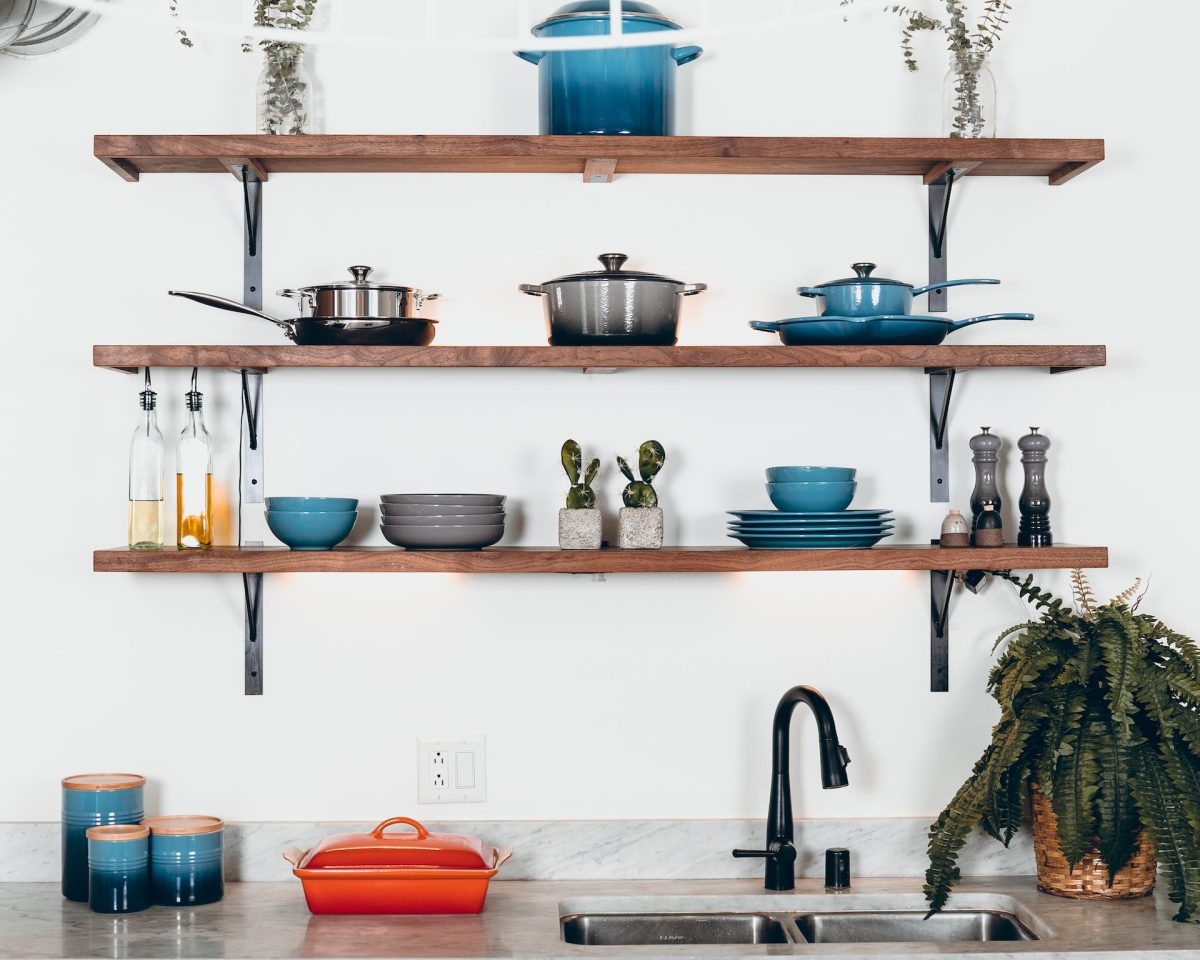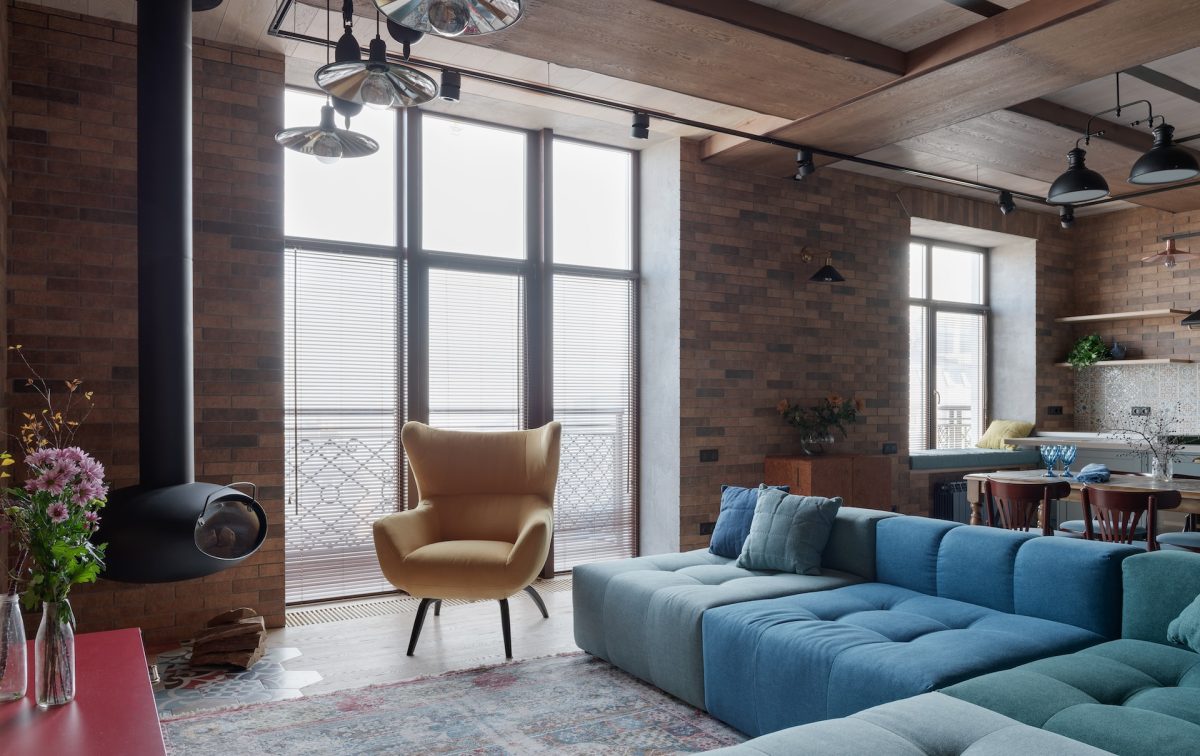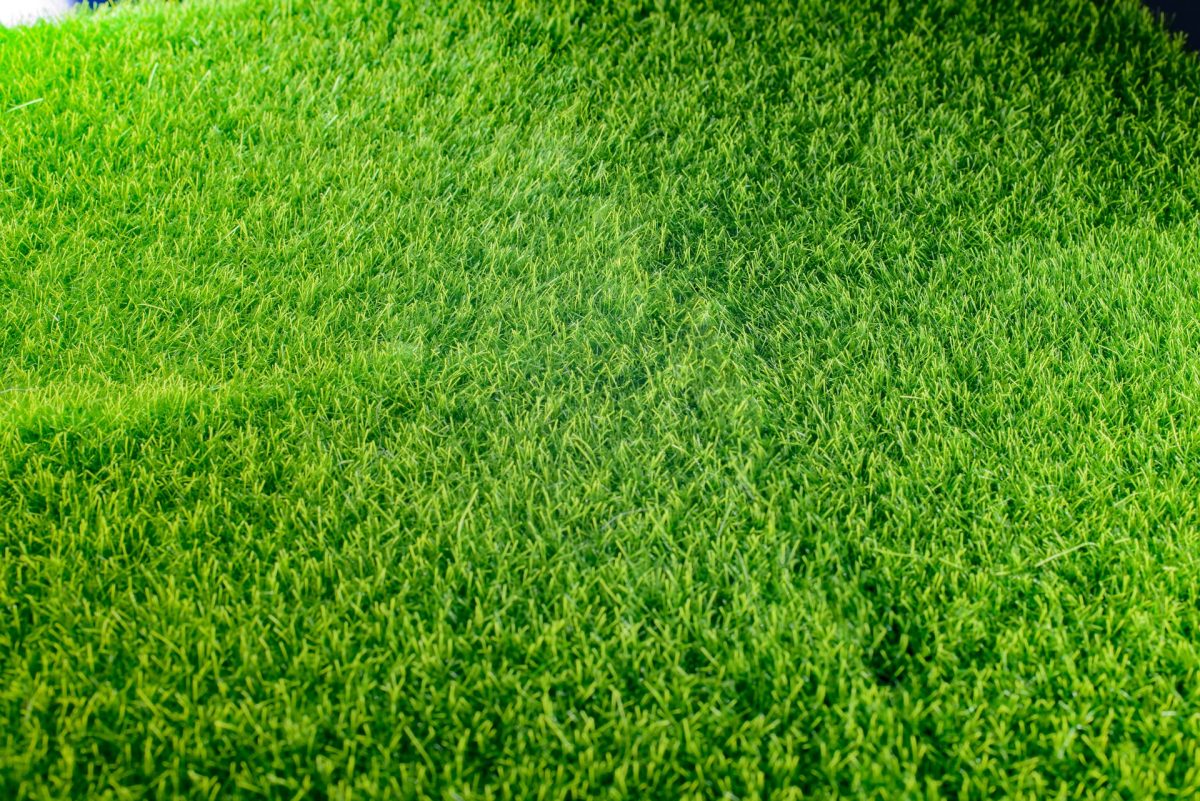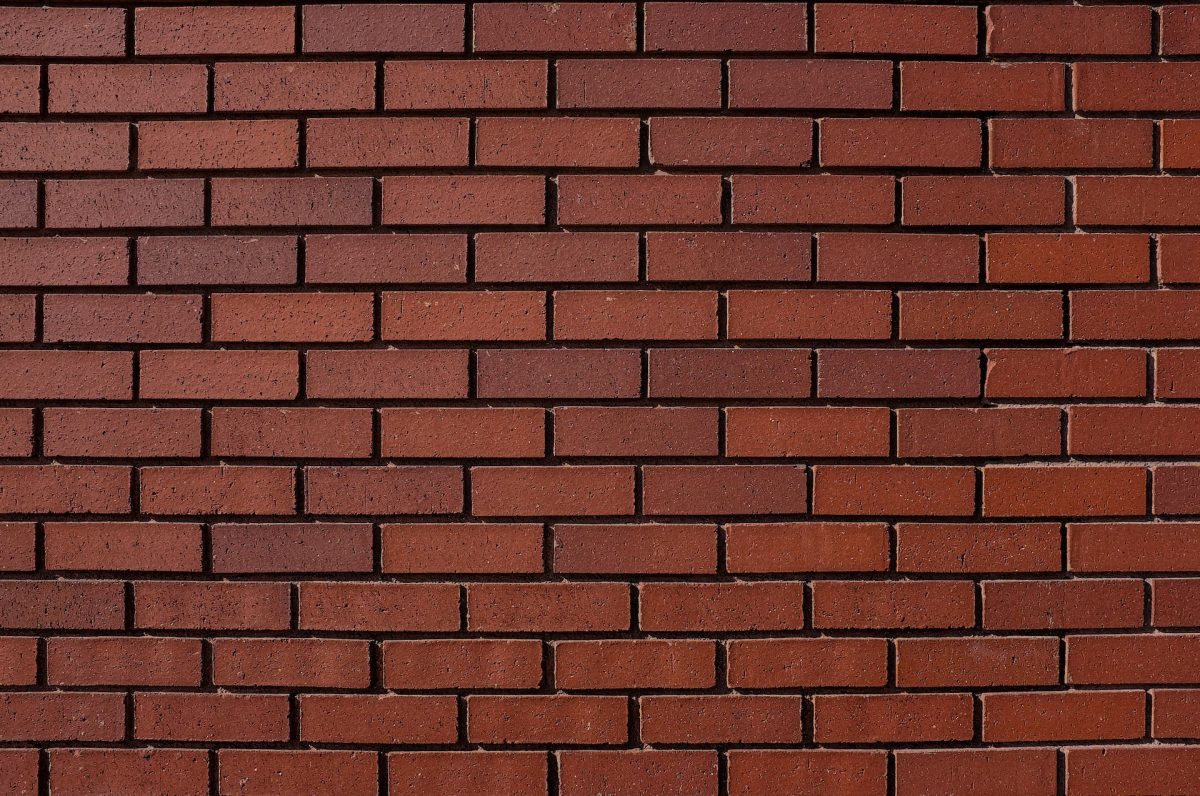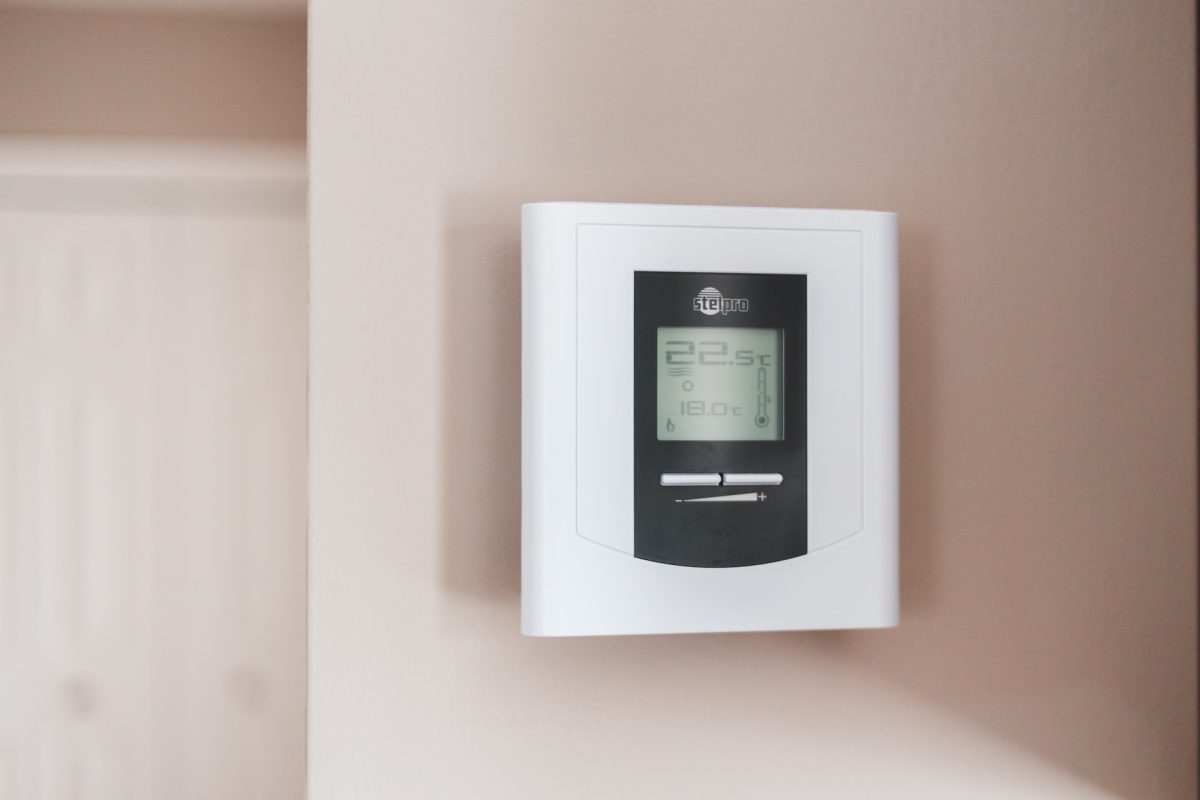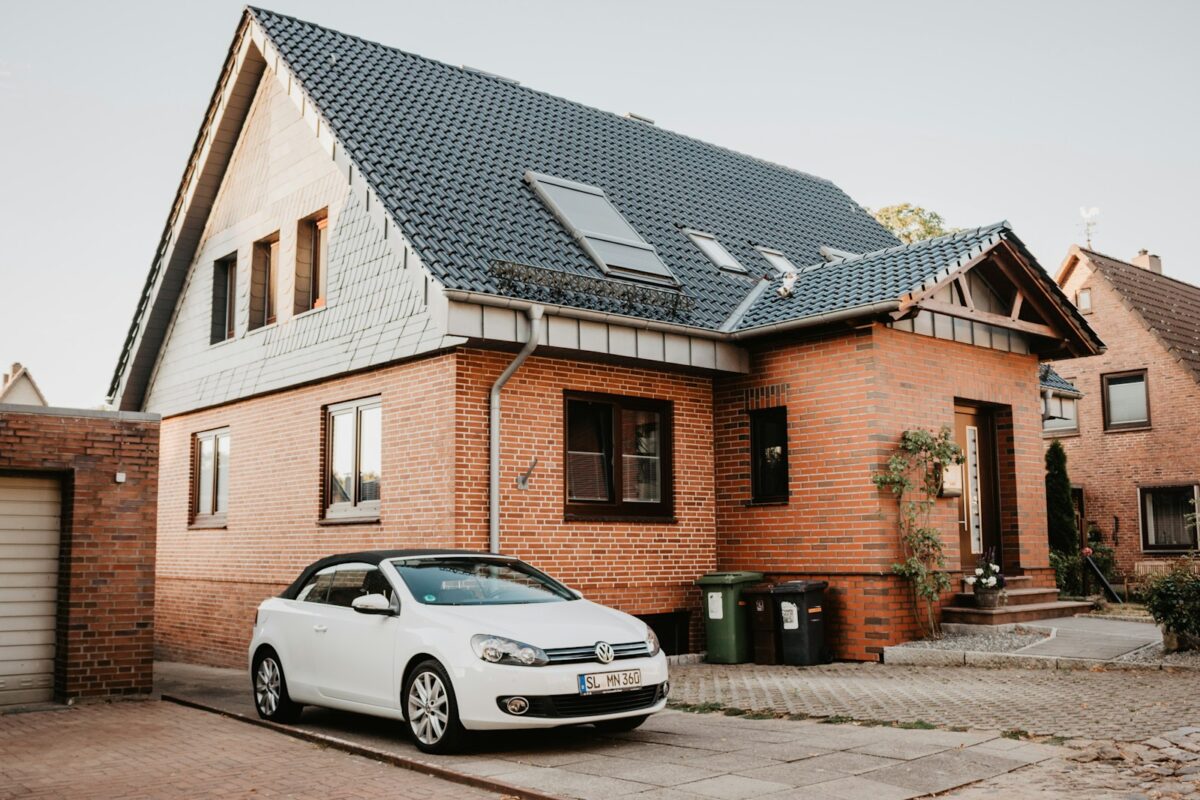
How Often Should You Get a Roof Inspection? (And Why Timing Matters)
As a new homeowner, there’s a lot to keep track of—mortgage payments, utility bills, maintenance schedules—but one essential task that often gets overlooked is a roof inspection. Your roof is one of the most important parts of your home, protecting you from the elements and keeping your home structurally sound. But how often should you…

How to Choose the Right Heat Pump for Your Home
Understanding Heat Pump Types When selecting a heat pump for your home, the first step is understanding the different types available. The most common options include air-source, ground-source (geothermal), and ductless mini-split systems. Air-source heat pumps are widely used due to their affordability and ease of installation. Geothermal heat pumps, on the other hand, are more efficient but require significant upfront investment. Ductless mini-split systems are an excellent choice for homes without existing ductwork. Key Factors to Consider Choosing the right heat pump involves considering several key factors, including climate, home size, and budget. If you live in an area […]

Interior Anti-Stress: 9 Design Techniques for Calm and Harmony by Interior Architect London
In today’s fast-paced world, the demands of work, family, and technology often leave us feeling overwhelmed and stressed. One of the best ways to combat these feelings is through our living spaces. The way we design and decorate our interiors can significantly impact our mood, sense of well-being, and overall mental health. Creating a calm and harmonious environment within your home can serve as an oasis, providing a respite from the pressures of daily life. An interior that promotes tranquility and relaxation is not only about aesthetics but also about how the design contributes to mental and emotional peace. If […]

How to Renovate Your Home Without Breaking the Bank
Renovating and decorating your home can seem overwhelming, but it doesn’t have to cost a fortune. With careful planning, clever shopping, and some creative thinking, you can transform your space while staying within budget. This article provides practical tips to help you tackle home improvement projects efficiently. Plan and Prioritize Your Projects Before starting any renovation, make a clear plan. Decide which areas of your home need attention and rank them by importance. Prioritize projects that add the most value or solve pressing issues, such as improving insulation, repairing a roof, or upgrading outdated appliances. To keep costs under control, […]

Combine Comfort of a Country House and Travel
Millions of people throughout Europe and the USA own caravans, many of which are permanently installed in resort towns or holiday parks.
Static caravan is considered by contemporaries to a greater extent as a place for recreation. However, caravans that appeared in America had an applied meaning. At first it was a covered caravan-wagon, the movement of which was carried out by a team of horses. Since 1745, caravan played an important role in the development of the North American continent inland. The first settlers had to move a lot in search of a suitable place, during the colonization of remote areas.
Mass production of caravans became possible with the automotive industry advent in the late 1920s. A number of companies have actively taken up the production of caravans and trailers. In the 1920s and 30s, caravan was in great demand in the United States.
Camping clubs mushroomed all over the country, despite dirt roads and limited camping opportunities. The largest camp ground in 1922 was considered to be the a camp ground area in Denver, where there were 800 camp grounds, a nine-hole golf course, a barber shop and a movies.
What is the reason for the increase in popularity and public interest in caravans these days?

First, recent changes in the global economy have led to the fact that life on wheels has become more attractive due to the increase in the cost of stationary housing.
Second, there are people who do not want to devote most of their time to working in a traditional workplace.
Third, many people just want to realize their life dream of being able to travel. Abandoning stationary country houses, daredevils purchase caravans and hit the road. Caravans allow you to see many beautiful places, especially since the choice of caravan is not limited to one design option.
Advantages of caravans
You definitely need to try static caravan ownership: it will be a useful and interesting experience. Find out the static caravan ownership secrets below. Staying in a caravan may seem like a fun adventure.
Of course, first of all. You can go anywhere: living in a motorhome gives you the freedom to move in any direction. There is no need to stay in one place. Wake up anywhere and choose for yourself what kind of view you will have from the window today!
Living in caravans allows you to move around the country with a minimal budget. Such a trip will allow you to save on air tickets and hotel reservations. Moreover, you won’t have to worry about suitcases with clothes and other essentials, as all your belongings will be at hand.
Unlike an ordinary apartment or house, you will not have to collect a ton of documents, sort out options and areas of residence, spend money on real-estate transaction specialists and time on making a deal. On the other hand, if you don’t like your caravan, you can easily sell it in a couple of weeks and buy a new one.

Besides the fact that your utility bills will be very low. If you are traveling with the whole family, you may need a gasoline generator for the caravan. It makes it easier to provide electricity to various electrical appliances. The gasoline generator is a compact mobile power plant with a capacity of up to 18 kW. The generator will provide you with the necessary energy according to your needs.
Of the mandatory state taxes, only the transport tax will now concern you — neither the land tax nor the real estate tax are your problems anymore. Well, only if you don’t stand on the territory of some nature reserve…
The dimensions and living area are smaller compared to an ordinary house. Therefore, it is easy to keep it clean and clean yourself. You won’t have to bother with general cleaning or hire a maid on the weekend. This way, you will save money, time and nerves.
The owner of the caravan becomes a full-fledged master of your own life. Independence and a high degree of freedom in movement are accompanied by a decent level of comfort. It’s worth paying for.
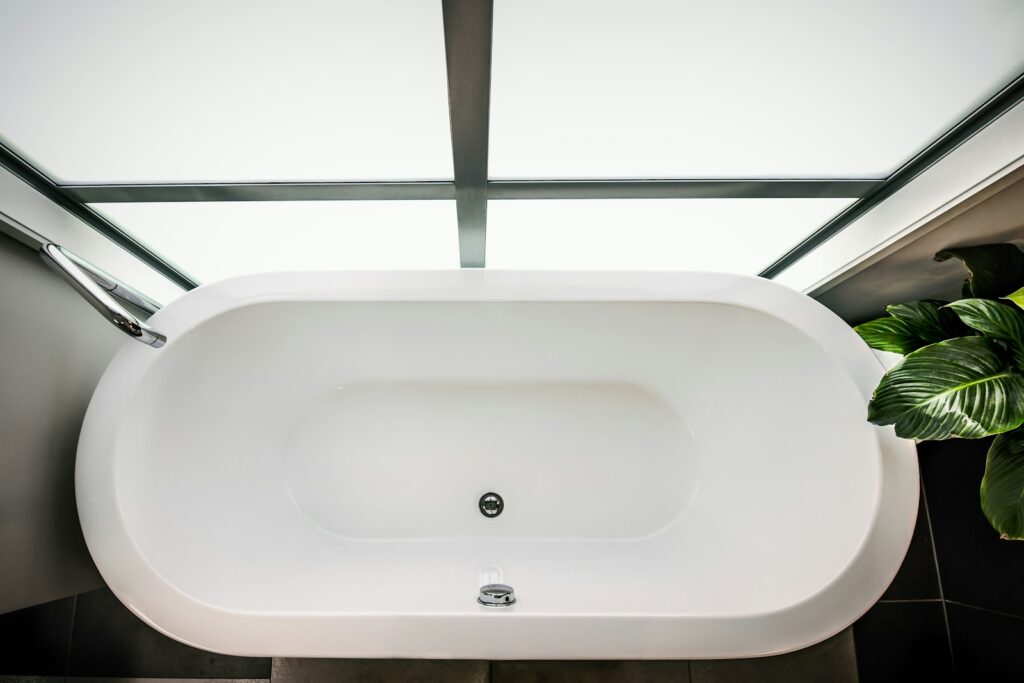
How To Extend The Service Life Of Your Bathtub
The service life of a bathtub with proper care can reach 50 years. However, over time, the enamel covering old bathtubs is damaged. Chips appear on the surface, corrosion may occur. It looks unsightly, and it does not benefit your health. This contributes to fungus, mould, and just makes your mood worse. Therefore, you should not skimp on the quality of the bathtub coating.
How to refinish a bathtub?
For quick bathtub refinishing without removing the old coating, you can use special restoration tools that allow you updating of the surface without carrying out a complete replacement.
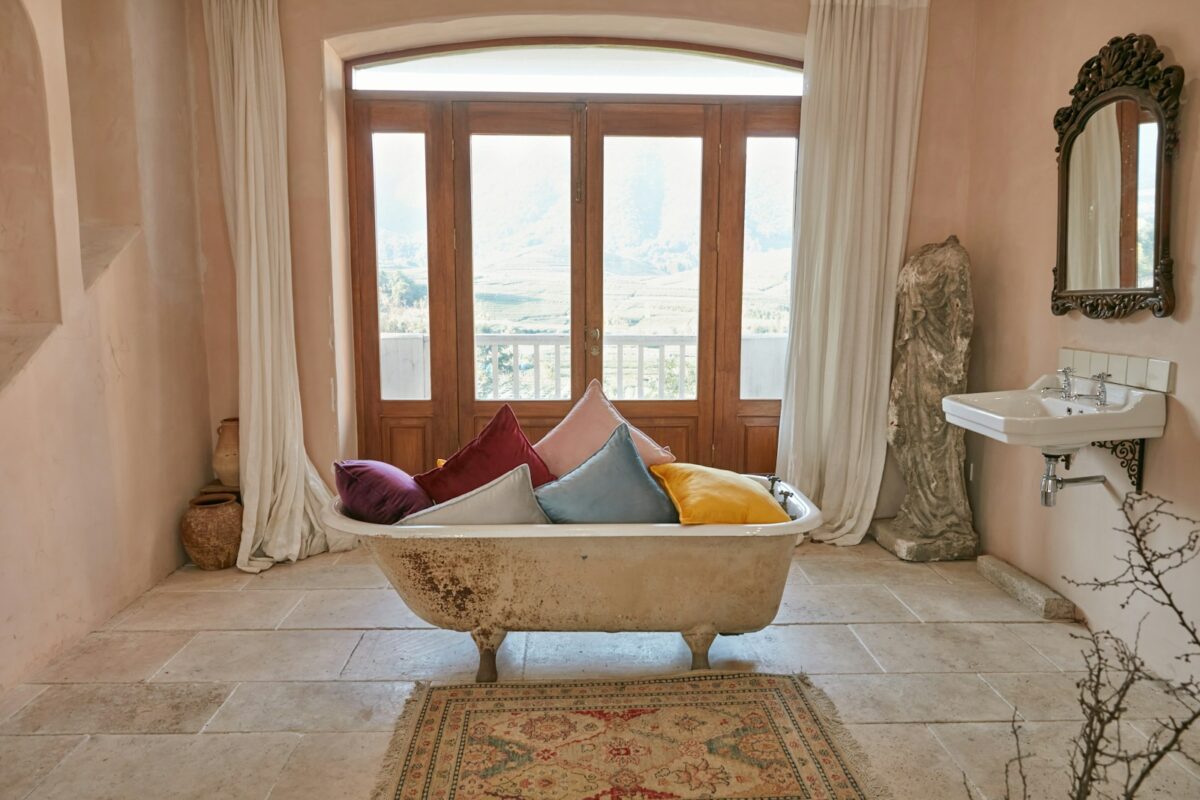
One of these products is a special resin liner for baths. It allows you to cover the old coating and give the surface a new look. To do this, it is necessary to carry out preparatory work, such as cleaning the surface from dirt and grease. In particularly difficult cases, grinding may be necessary for dedusting. Then the coating is applied in several layers.
This method of restoration allows you to significantly save time and effort compared to a complete bathtub replacement. For example, the coating process can take up to 4 hours, the drying process up to 36 hours. It all depends on the complexity of the case. However, before carrying out the work, it is worth making sure that the surface is suitable for coating and does not have serious damage or chips, in which case it is better to contact professionals.
Contact experts. In addition to the high-quality work done, you will receive a quality guarantee, the absence of unpleasant odors, and a restored coating for a period of at least 3 years.

Why is it Important to Clean Ventilation?
The presence of a modern ventilation system in the room does not necessarily mean high air quality. If you neglect dryer vent cleaning and disinfection procedure of ventilation systems, dirt of various origins will accumulate in the air ducts. In addition, this procedure is mandatory for organizations, and it is necessary to clean the air ducts of ventilation systems at certain intervals.
Reasons for the deterioration of ventilation functions
Air is supplied into the room through air ducts. Small debris, dirt, cobwebs, and dust penetrate and settle in them with the air. If we talk about food production, then fat particles are added to this list. It is impossible to stop the gradual process of pollution, but you can periodically clean the air ducts to maintain the functionality of the system and create a healthy climate.
What is the need for cleaning?
Fat and dust accumulated in the system create a favorable environment for the growth of various microorganisms, including pathogenic bacteria, fungi, and dust mites. People in the room, at the same time, have an increased risk of developing allergies or chronic diseases. Microbes from air ducts freely spread to all nearby rooms, causing people to get acute respiratory infections or acute respiratory viral infections.
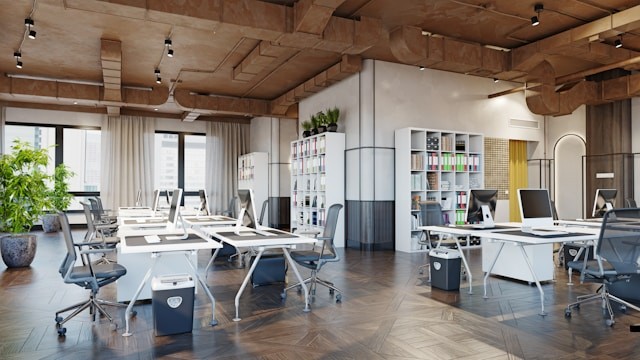
Another negative aspect is the accumulation of dust, which increases the risk of fire. Even with a small fire, the fire easily engulfs all rooms connected to each other by ventilation communications. Air duct cleaning in a cafe or restaurant is especially important, where the accumulation of dust and grease can easily detonate a fire.
The third reason for cleaning ventilation ducts is the reduced functionality of equipment clogged with dirt. Deposits on the internal cavities of the ducts interfere with normal air movement, and the productivity of the system decreases significantly.

The Most Relaxing Corner Of Your Home
If you have a garden or patio, it’s time to consider adding a pool. There are many alternatives to having your own pool at home, in addition to starting something more complex and large-scale, such as its building. These temporary options require much less investment than building a swimming pool. You can choose between inflatable pools, pools made of wood, metal, fiberglass, etc. Find out more about Fiberglass pools Atlanta. The cost of the mainly depend on the pool`s size and material. It also has a big impact on whether the pool is submerged in the ground or not, since […]

Combine Comfort of a Country House and Travel
Millions of people throughout Europe and the USA own caravans, many of which are permanently installed in resort towns or holiday parks. Static caravan is considered by contemporaries to a greater extent as a place for recreation. However, caravans that appeared in America had an applied meaning. At first it was a covered caravan-wagon, the movement of which was carried out by a team of horses. Since 1745, caravan played an important role in the development of the North American continent inland. The first settlers had to move a lot in search of a suitable place, during the colonization of […]

Smart Ways to Shop Online
Shopping online has become a convenient and efficient way to get everything from clothing to electronics, often at lower prices than you’d find in physical stores. However, to truly maximize your savings and make smart purchasing decisions, you need to know the best strategies for navigating the digital shopping world. Below are some smart ways to shop online, helping you save money and time while avoiding common pitfalls. Look for Coupons and Promo Codes: Before completing any purchase, always search for coupons and promo codes. These can provide instant discounts on your order or even offer free shipping. Many retailers partner with […]

Cleaning After Renovation
Will your own strength be enough or is it necessary to call cleaners after renovation? Renovating an apartment is always a very stressful and labor-intensive process. It does not matter whether you do it yourself, use the services of private craftsmen or a home cleaning service. There will always be a lot of nuances, unforeseen circumstances and the like that will change your initial plans for arranging your apartment. At the same time, one thing remains unchanged - a huge amount of household and construction waste, and most importantly, all-pervasive fine construction dust after the completion of construction work. Accordingly, you will always face the question - cleaning the apartment after renovation.
Do-it-yourself cleaning
Today, the option of cleaning after renovation on your own is chosen primarily in the hope of saving money. And this is not surprising, because high-quality (and sometimes not so high) renovation drains a huge amount of material resources from the owners, additional expenses on the services of a professional cleaning company seem completely unnecessary and, moreover, excessive. In addition, the prices of some companies for cleaning an apartment after renovation are very high. Saving on the cost of such work seems quite justified.
Two important tips
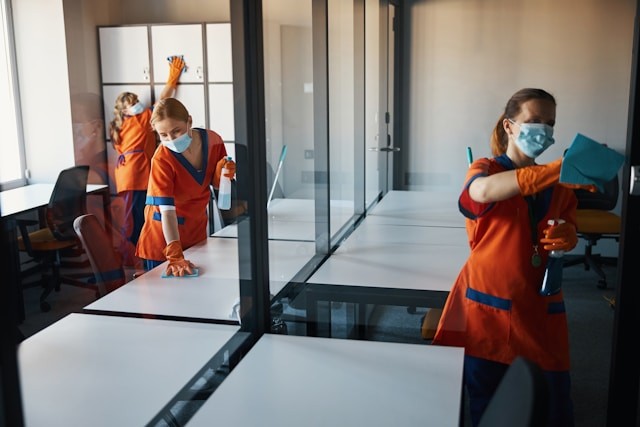
If possible, prepare your apartment for post-renovation cleaning before the renovation itself. It is better to move the most valuable things to other premises – to relatives, friends and acquaintances. Cover outerwear tightly with plastic film. Place damp rags near the doors (dust will partially settle on them), block the passages between zones with damp material against construction dust.
For cleaning the apartment, choose old, unnecessary clothes - no matter how hard you try, the clothes will be significantly stained with traces of repair, the same goes for shoes - unnecessary sneakers or boots are best suited.
But if you decide to order cleaning service near me after renovation, you need to choose the one that can provide such a service with high quality. In other words, choose the best company for cleaning apartments after renovation. How to do this?
Specialization
We recommend choosing a cleaning company that specializes in cleaning residential buildings - apartments, cottages and country houses. There are a huge number of cleaning services, and specialization matters even in such a seemingly simple matter as cleaning. Agree, it is one thing to clean an underground parking lot or office premises, and quite another - an apartment. If the main activity of the company is cleaning residential buildings, this will definitely be mentioned on the company’s website.
Separate section

Find a separate section on the cleaning company’s website specifically for cleaning apartments after renovation. As already mentioned, cleaning after renovation is a specific type of cleaning that requires both experience and professional cleaning equipment. Therefore, the presence of a separate section dedicated to this area will, at least indirectly, mean that the company actively promotes this service and has experience in it. Some companies that do not meet this criterion, have information about post-renovation cleaning in the general sections among other services.
The price
The price of post-renovation cleaning. A very important, and for many, a determining factor in the selection process. Keep in mind that the price for these services should be the highest among other basic and additional cleaning services, since such cleaning is the most difficult. You should be wary of both the too low cost of these services (the company is unlikely to work at a loss) and the excessively high price (after all, we are calling a cleaner, not launching a satellite into space).
When ordering, check whether the price of post-renovation cleaning indicated on the company’s website includes the delivery of all necessary inventory and equipment.

Where to Buy a House in London for Family Life?
London, the business capital, is a desirable city for work and life. That is why more and more people are moving to the British capital with their families. But many when buying real estate face the problem of choosing an area. Those who do not know much about the districts of London, choose its centre, where all the noise of the capital is. In addition, real estate in central London has many nuances that sometimes limit the possibilities of its owners in terms of space, form of ownership and the possibility of reconstruction. In particular, those who plan to move their family to London will be most suitable for new builds in North-West London.
In which areas of London is it recommended to buy a property?

Experts suggest taking a closer look at the exclusive areas of Hampstead and Highgate in north-west London near Regent’s Park. Real estate in these areas is not just a match of price to quality, but also a high level of comfort, silence and security. These areas are most suitable for those who want to settle in the British capital with their family, in a quiet, peaceful, prestigious location, but at the same time close to the city centre: 15-20 minutes by car to Oxford Street and Regent’s Park, 25-30 minutes by car to Heathrow Airport.
What is the advantage of these areas?
In short, these are ideal areas for a comfortable life: they are located next to the large Hampstead Heath Park and therefore are surrounded by greenery, there are no crowds of tourists here. It is in this park that the highest point of London is located, from which a stunning perspective of the city opens. In the park there are ponds for swimming, running tracks, the famous manor-museum Kenwood House (Kenwood House) with a classic English park broken around. Here are some of the best private schools in London, which is very convenient for families with children.
It is these areas that many world celebrities, members of aristocratic families and owners of multimillion-dollar fortunes have chosen for themselves. Right outside the gates of the park, Bishops Avenue, the street of billionaires, originates. This street has been a symbol of prestige and prosperity for the wealthiest business people from all over the world for many decades. The houses here are larger than in the centre of London, much more comfortable, with an extensive garden, a swimming pool and separate apartments for servants and guests.
What are the disadvantages of real estate in central London?
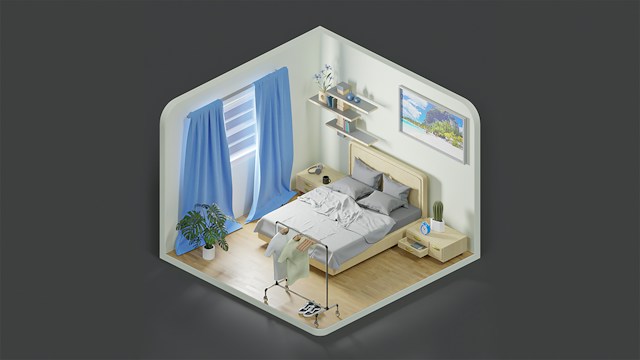
The biggest problem is to find real estate in the centre that is being sold in perpetuity (the so-called freehold). In Mayfair, many buildings are being sold for temporary ownership on a leasehold basis. That is, the property is sold with the right to use the land for a certain number of years, while the land itself belongs to members of the royal family. In north London, you will buy a house and land and become their rightful owner.
And finally, the lack of luxury real estate in the centre of the capital leads to the fact that it is very difficult to find a good spacious house. Moreover, many buildings are protected by the state, and reconstruction of the facade of the building becomes impossible. That is why developments in North London are recommended.
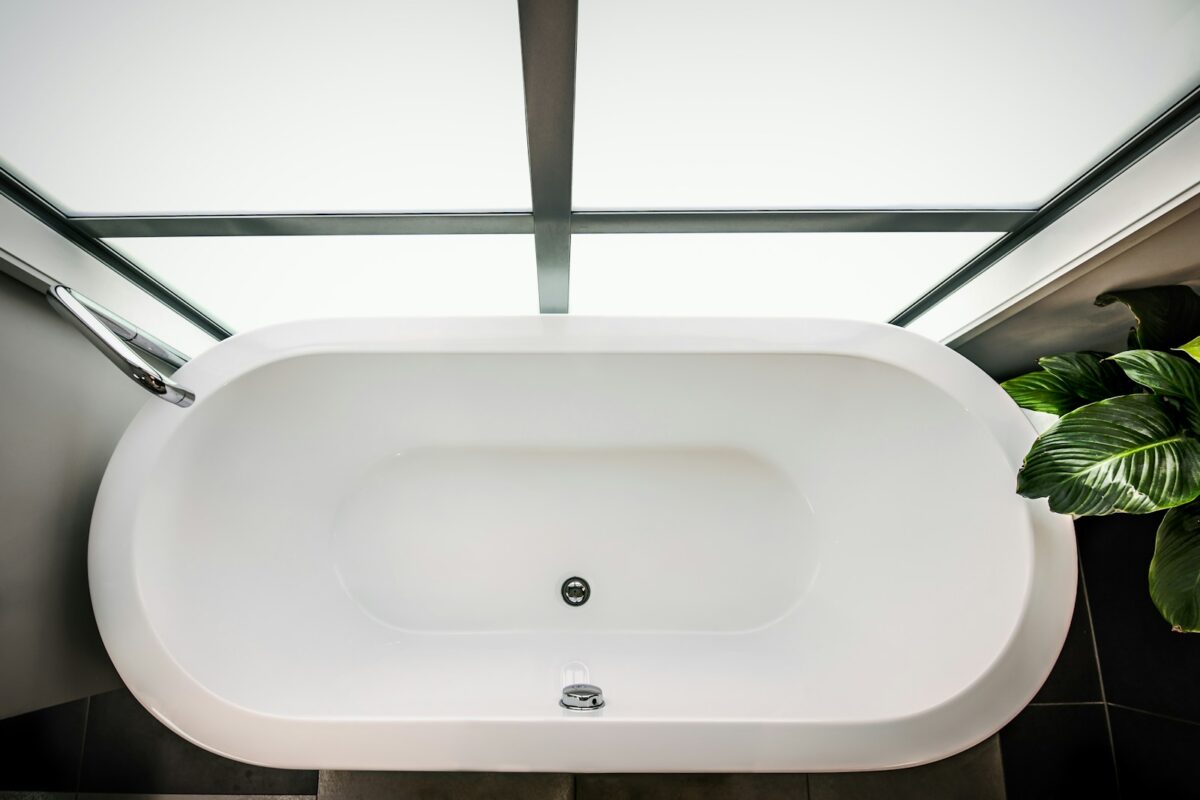
How To Extend The Service Life Of Your Bathtub
The service life of a bathtub with proper care can reach 50 years. However, over time, the enamel covering old bathtubs is damaged. Chips appear on the surface, corrosion may occur. It looks unsightly, and it does not benefit your health. This contributes to fungus, mould, and just makes your mood worse. Therefore, you should not skimp on the quality of the bathtub coating. How to refinish a bathtub? For quick bathtub refinishing without removing the old coating, you can use special restoration tools that allow you updating of the surface without carrying out a complete replacement. One of these […]

Why is it Important to Clean Ventilation?
The presence of a modern ventilation system in the room does not necessarily mean high air quality. If you neglect dryer vent cleaning and disinfection procedure of ventilation systems, dirt of various origins will accumulate in the air ducts. In addition, this procedure is mandatory for organizations, and it is necessary to clean the air ducts of ventilation systems at certain intervals. Reasons for the deterioration of ventilation functions Air is supplied into the room through air ducts. Small debris, dirt, cobwebs, and dust penetrate and settle in them with the air. If we talk about food production, then fat […]

Garage Door Repair
Owning a garage guarantees a special comfort that is not available to every car enthusiast. Although those who have a room for transport know how much trouble is associated with the maintenance of this structure. Just to repair garage doors that are damaged due to their venerable age or mechanical damage, you have to spend a lot of time or call chula vista garage door repair. And if the product is incorrectly mounted or technological errors were made during its installation, you have to replace components, straighten the guides, and perform other repair actions after a short period of operation. […]


